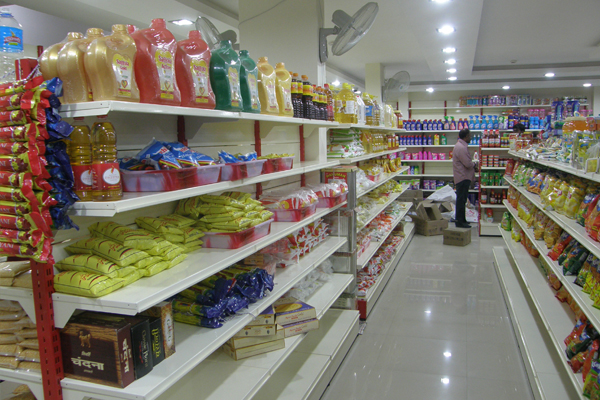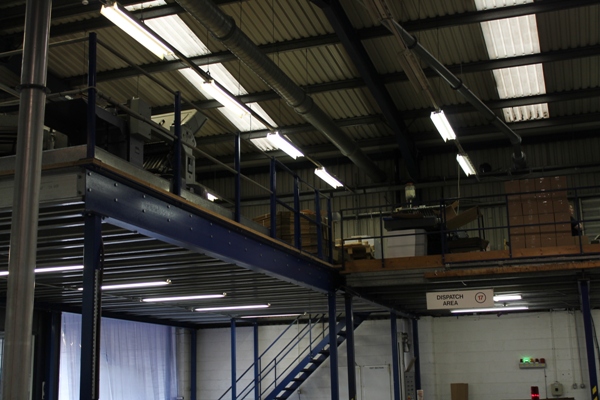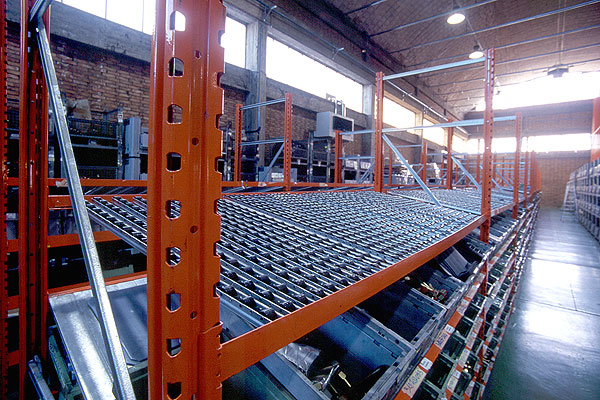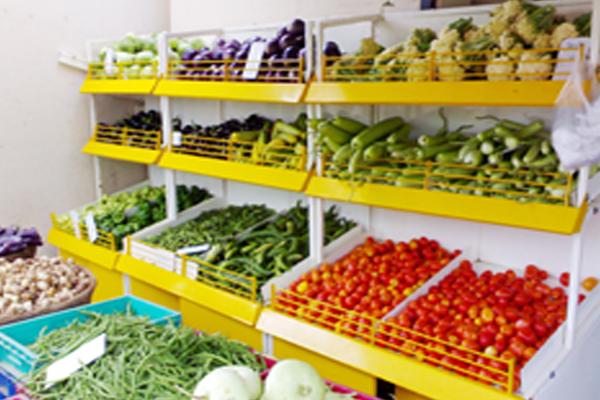Organisations with warehouse management requirements know that planning the use of their available space is critical. It goes a long way in the optimum use of space and keeps products, and other property organised. What’s more, optimum planning and utilisation of storage space and equipment save the company revenue lost in damaged or lost products, workplace hazards caused by ill-managed product storage, etc. Shelving units or racking equipment are the most commonly used storage solutions that most warehouse managers use. As a premier name in storage rack manufacturing, we at Donracks provide you with some of Chennai‘s smartest warehouse storage solutions. We’ve put together some great information to help you optimise your warehouse’s storage space optimally.
A lot of times, racks and shelves are not properly assessed for capacity, and this may lead to overloading. Overloaded racks or shelves in a warehouse can be as dangerous as a disorganised warehouse, leading to property damage, loss, or workplace hazards that lead to loss of lives. This is why the correct assessment of storage units is critical in a warehouse environment.
Factors that Determine Industrial Warehouse Shelving Unit Capacity
In many cases, unit capacity information can be found when the shelving or racking unit is purchased. But, if this information is not made available to you, it is good to contact the manufacturer and get the right information from them. This is the first and most basic step. Dimensional measurements can supplement weight measurements to determine how and how many of your products or equipment you can arrange in each unit.
Once you have the maximum loading capacity, there are several factors you need to take note of before using the product.
Firstly, positioning and arrangement of your products or equipment on the racks.Then, the capacity rated by the shelving manufacturer will be of no value if the products are not arranged on the shelves optimally. Load distribution is an important factor when arranging products on the shelves. Improper balancing will cause some uprights to experience more stress than others, throwing the whole unit dangerously off-balance.
Pallet Rack Beaming:
The beaming structure that runs horizontally on your pallet racks work with the uprights to provide balance and strength to the entire structure. So the stress and load capacity of the beams become an important factor when determining the capacity of the racks. This is also important when products are loaded off or onto the racks with specialised equipment. Most manufacturers include the capacity of the beams, but these numbers are measured in beam pairs. This can be important for calculating load capacity and dimension. For example, beams are the part of the rack that rests on the forklift when placed on them.
Capacity of the frame:
Uprights, also called vertical columns, make up the framework of the pallet racks. Three main factors affect the capacity that the upright frames can hold. These are:
- upward space between the beams, or height-wise beam spacing
- the total system height, and
- the number of vertical beams supporting the system
Furthermore, a higher beam-level number would result in a structurally sound and stabilised rack that could support more weight. You could also look into how the pallet rack system has been manufactured. A solid rack is generally roll-formed into keyhole- or teardrop-shaped slots. This system adds to the flexibility and functionality of the pallet racks since you can configure them to suit your space and function.
Anchoring and Ratio of Height-to-depth:
Height-to-depth ratios can be critical numbers in pallet-rack. You will know a strong pallet rack when you find that the height-to-depth ratio is no more than a 6:1 ratio. If you don’t see this ratio, you need to look for external bracing or anchoring.
Anchoring, as the term suggests, is a technique that stabilises or ‘anchors’ the pallet rack to the ground to provide supplementary structural support and keep the structure anchored to the floor. This prevents toppling, collapse, or swaying so that lives and property are kept safe around these structures. Mechanical anchoring systems are often used jointly with column protectors on pallet racks to prevent collapse or other damage to pallet racks in unforeseen events like forklift accidents.
Weight Deduction of Racking Systems:
This is one factor that can be overlooked, but it is important to keep in mind. Most often, the racking system weight is included in the system’s load capacity. This number needs to be deducted to arrive at the actual capacity of the pallet rack. You can either use your methods to find this weight or contact the manufacturer directly. Once you have the weight, minus this figure from the capacity, you have the numbers you need.
The final note of caution here is to have loading capacity and information on pallet rack dimensions always displayed as a printed label or visible cautionary note on the side of the rack. Your employees should always access this information or alert you if it is unavailable.
Things to Consider When Calculating Shelving Capacity
Shelving units are a popular choice for organised storage in industrial warehouses. They’re not as tall as racks, but this works to their advantage since they offer storage options that are more accessible to the hand. But shelves need to be properly assessed for capacity if you need them to function optimally. If shelving capacity does not figure into using the shelving unit, even one bolted or anchored to the floor can become a hazard.
Here are five important questions you need to ask before engaging a shelving unit for storage:
- What are the dimensions of your shelving units? These can be as important as weighted capacity.
- How long has the system been in use? Shelving units tend to lose holding capacity as they age.
- Has the shelving unit been subjected to structural or design changes? This can also affect capacity.
- Is the shelving unit used as a mobile storage solution or bolted to the floor?
- What products or equipment are being assigned to the shelving units?
Answering these questions will give you the dimensional and structural factors you will need to make optimum use of your shelving units.
Calculating Shelving Space in a Warehouse
Streamlining warehouse operations and storage systems is paramount to running the system smoothly. Having exact figures for individual and overall storage capacity will add to efficiency in budgeting, product procurement and space allotment. It may be tempting to have rough estimates or assign storage capacity calculations to only the shelving or storage units, but this will lead to inefficient storage solutions and waste of resources or space.
We have put together a few guidelines that can be used on a general basis for warehouse space allocation and storage management. But, these are meant as general guidelines. Every warehouse space will need individualised solutions.
First, figure out the specs on your storage units. You can do this in a few different ways:
- Use original drawings or specs from the manufacturer.
- In the absence of original records or drawings, you can visit the manufacturer’s website or even contact the manufacturer directly for the information, using the serial or model number.
- The last resort is usually manually inspecting and measuring the units and space. This inspection will also provide updates on the status of your racks or units: age, condition, installation method used, and purpose assigned to them.
Here are the most commonly used systems for calculating the storage capacity of a unit:
- Measure storage capacity in cubic feet by first calculating the available square foot space. This should be included in the packaging or with the manufacturer. You could also simply multiply width and depth.
- Find the space taken up by pallets, beams, and other non-storage parts on the unit in square footage.
- Subtract these two figures, and you will have the exact storage capacity available.
- Multiply this number by shelf height, and that will give you total shelf capacity in cubic feet.
- This is one of the easiest ways to calculate rated capacity on a shelving unit. But if you use this method, remember to use a little less than the capacity you arrive at.
Tips For Maximum Utilisation of Storage Space
STEP 1: Organise and plan for maximum optimisation. Measuring and working with exact values when you plan will be the most efficient way to plan space organisation.
STEP 2: Measure each unit and multiply this by the total number of shelving units to know how much inventory you can optimally store and how much total storage space you have.
STEP 3: With the above information, you can plan out your storage area layout.
STEP 4: Plan in enough detail so that all areas are included in layout planning. There needs to be enough optimisation so that employees are safe and have working space and easy access to the stored inventory. You may need to consider several options before you arrive at the one best suited to your space.
STEP 5: Consider investing in newer designs and higher quality racking or material handling systems. The newest systems take storage management optimisation to new levels and add to your systems’ efficiency.
In conclusion
Shelving and racking are an important aspect of industrial warehouse space management. But, they must be properly assessed for maximum capacity and dimension to give optimum results. Using them efficiently will also reduce the risk of workplace hazards that could result in the loss of property or even life. Take inventory of what you have, units that are in optimum condition, those that are damaged and need replacement, and maybe even those that do not fulfil your company’s needs or figure as extras that are not required. At Donracks, you will find the most optimally manufactured storage racks for warehouse storage. Contact us for details today!





